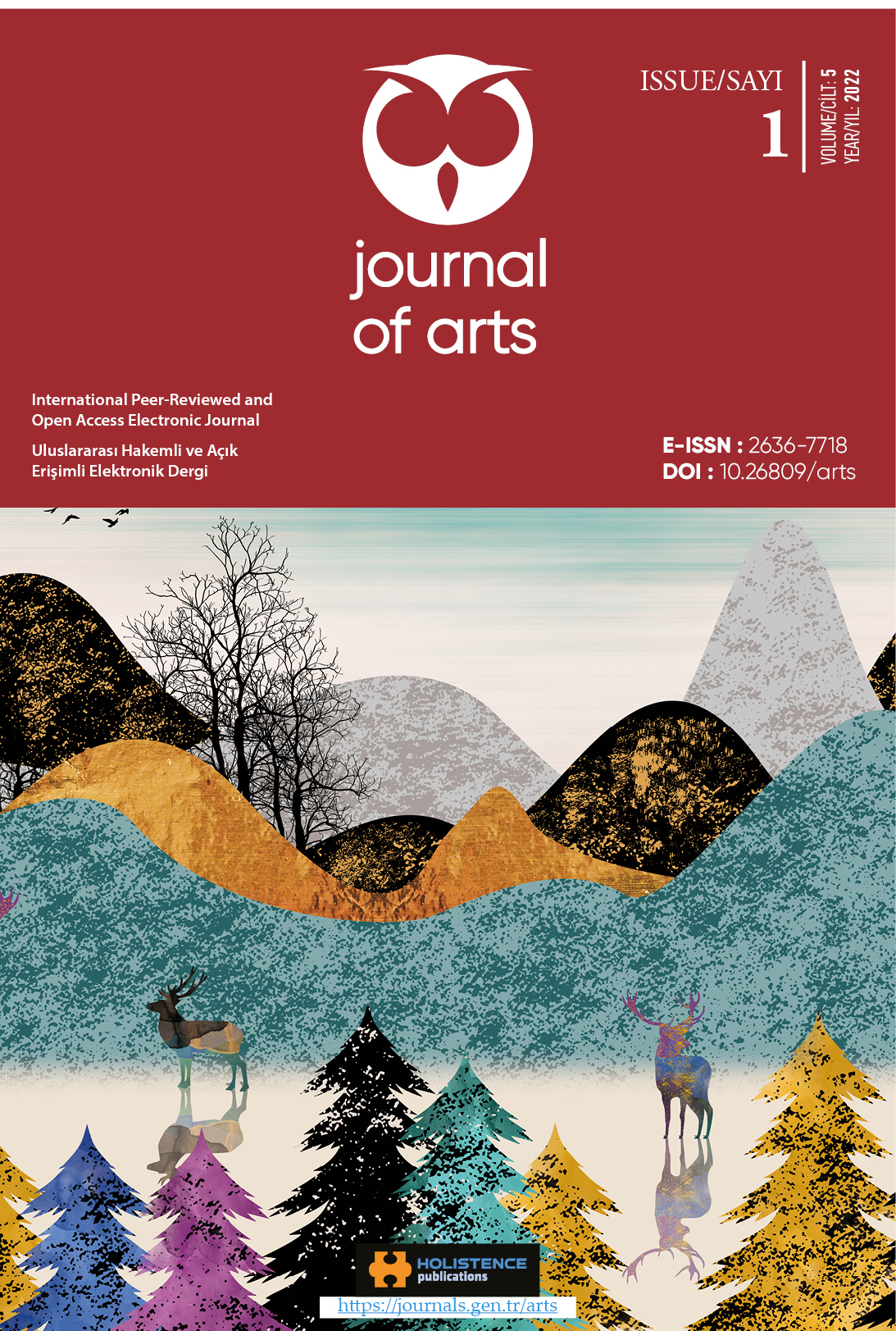Changing approaches in children's books; postmodern design
DOI:
https://doi.org/10.31566/arts.5.1.03Keywords:
Children's Books, Postmodern, Design, Metafiction, IllustrationAbstract
Postmodernism is a multicultural narrative with multiple perspectives (Doll, 1993). In the last ten years, a sub-genre with the definition of “postmodern” has emerged in children's picture books. Incomplete or contradictory texts and images given to the child consciously are designed to encourage different ways of thinking and interpretation. Taking action to demolish the traditional idea of picture books, these books encourage children and even adults to creative interpretations with their ironic, disconnected fictions, and surprise with their distinctive subject connections. These books, which do not contain unusual plot and intertextuality, parody, design layout, pictorial fonts and perspectives, and linear narrative styles, have metafictional features. Postmodern children's picture books, which do not use traditional visual analysis methods, create a space where the form of visual interpretation is left to the reader. With its unusual design, it invites the reader to navigate non-linear spaces and decode the visual codes to make sense of the complexities inherent in these texts.
This article will examine the approaches that prepare the conditions for the "postmodern children's book" in designing children's books, and the perceptions that develop in terms of the reader.
Downloads
References
ANSTEY, M. & BULL, G. (2000) Reading the Visual: Written and Illustrated Children’s Literature. Sydney, Harcourt.
ANSTEY, M. (2002, March). "It's not all black and white": Postmodem picture books and new literacies. Journal oj Adolescent & Adult Literacy, 4.5,444-457.
ANSTEY, MİCHELE, & BULL, GEOFF. (2006). Teaching and Learning Multiliteracies: Changing Times, Changing Literacies Newark, DE: International Reading Association.
BADER, BARBARA. American Picturebooks from Noah’s Ark to the Beast Within. New York : Macmillan Pub. Co., 1976.
DRESANG, ELİZA T. (1999). Radical Change: Books for Youth in a Digital Age. New York: The H.W. Wilson Company.
FEHR, D. E. (1997). Clutching the lectern, or shouting from the back of the hall: A comparison of modern and postmodern arts education. Arts Education Policy Review, 98, 27-31.
HARPER, L. J. ,& S. TROSTLE- BRAND (2010). ”More Alike Than Defferent: Promoting Respect Through Multicultural Books and Literacy Strategies.” Childhood Education 86(4):224-33
GOLDSTONE, B. P. (2002). Whaz up with our books? changing picture book codes and teaching implications. Reading Teacher, 55,362-350
MACKEY, M. , & MCCLAY, J. K. (2000, October). Graphic routes to electronic literacy: Polysemy and picture books. Changing English: Studies in Reading & Culture, 7, 191-201.
MİTCHELL, F. M. , & NELMS, V. C. (1992). Using children's literature in the art curriculum. In A. Johnson (Ed.), Art Education: Elementary (pp.187-199). Reston, VA: National Art Education Association
NODELMAN, PERRY. (1996). Illustration and Picture Books, in International Encyclopedia of Children‘s Literature, Peter Hunt, ed., pp. 113–124. London: Routledge.
SERAFİNİ, F. (2004). Lessons in Comprehension: Explicit Instruction in the reading workshop. Portsmouth, NH: Heinemann.
SERAFİNİ, L.R. (2011 November). Expanding Perspectives for Comprehending Visual Images in Multimodal Texts. International Literacy Association, 54(5),342-350.
SİPE, L. R., & MCGUİRE, C. E. (2006). Picturebook endpapers: Resources for literary and aesthetic interpretation. Children’s Literature in Education, 37(4), 291–304.
SMİTH, F. (1988). Joining the literacy club: Further essays into education. Portsmouth, NH: Heinemann Publishing.
TRİTES, R.S. (1994, December). Manifold narratives: Metafiction and ideology in picture books. Children s Literature in Education, 2.5, 225-242.
Additional Files
Published
How to Cite
Issue
Section
License
Copyright (c) 2022 Holistence Publications

This work is licensed under a Creative Commons Attribution 4.0 International License.
When the article is accepted for publication in the Journal of Arts, authors transfer all copyright in the article to the Rating Academy Ar-Ge Yazılım Yayıncılık Eğitim Danışmanlık ve Organizasyon Ticaret Ltd. Şti.The authors reserve all proprietary right other than copyright, such as patent rights.
Everyone who is listed as an author in this article should have made a substantial, direct, intellectual contribution to the work and should take public responsibility for it.
This paper contains works that have not previously published or not under consideration for publication in other journals.










